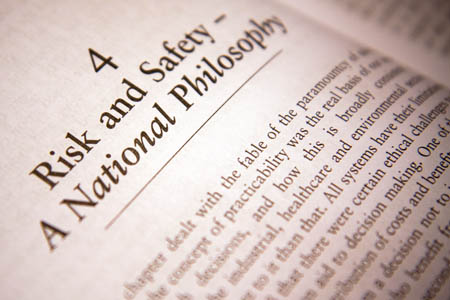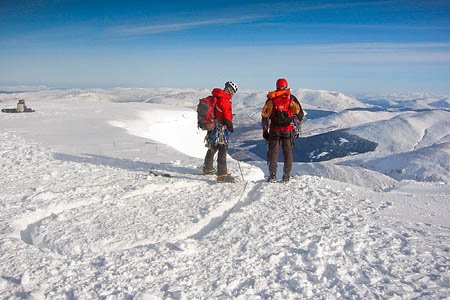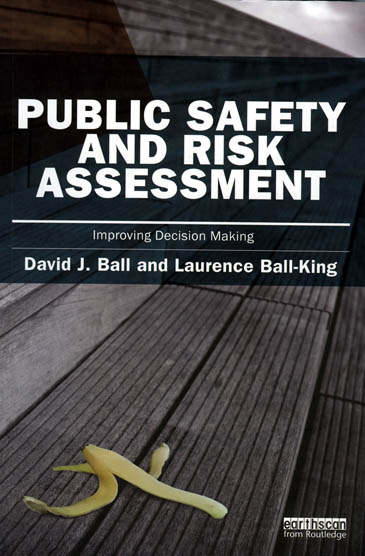Public Safety and Risk Assessment
By David J Ball and Laurence Ball-King
Is Britain wrapped in cotton wool? It’s a question posed by the authors in this book which looks at how legislation originally introduced with the laudable aim of reducing workplace deaths and injuries is seen to permeate every walk of life, including the great outdoors.
Professor Ball of Middlesex University and his co-author Laurence Ball-King both have expertise in risk management and use this book to examine whether the application of health and safety criteria to public activities such as adventurous pursuits, including climbing and mountaineering, is working satisfactorily.
The book is not solely devoted to adventure activities, though there is a whole chapter which looks at the sector. Rather, its aim is to argue whether health and safety policies, and risk assessments in particular, are appropriately applied to general activities.
As the authors say: “This book seeks to inform and re-enfranchise people who feel they have lost out in some way through strictures of health and safety, and secondly to support a more considerate application of risk assessment, specifically in the domain of public space and activities, from whence most of the friction seems to originate.
“In doing this, the aim is not to discredit health and safety, but to aid understanding.”
The pair point out that preventing injury has become paramount in many professionals’ minds, and the consequences of depriving youngsters and others of the benefits of healthy, if risky, activities is overlooked. “At the societal level, the impact upon generations of children and young people is nothing short of alarming,” they say.
Allowing children to do what previous generations did: playing with water, climbing trees, riding bikes and skateboards and using playgrounds, benefits not only their physical health, but also develops their own ability to evaluate everyday risks and formulate their methods of dealing with these.
Ball and Ball-King use an example of the ‘safe’ playground. The British Standard for equipment says that ladders and stairs should have equally spaced rungs and constant gradient. But Danish Playground Association president Helle Nebelong says: “Standardised playgrounds can be dangerous. When the distance between ladder rungs is the same, the child has no need to concentrate. Play becomes simplistic and children no longer have to think about their movement. The ability to concentrate on estimated distance, height and risks needs practice.”
The authors also contend that risk assessment is often subjective, and carried out by people who don’t have knowledge of the specific activities being carried out. Bodies often ‘buy in’ the expertise from outside practitioners.
Fear of the increasing tendency towards litigation drives much of the thinking on risk assessments. This, coupled with the fact that the Health and Safety at Work Act 1974, framed as a piece of industrial legislation, also extended the duty to reduce risk to those not in the employment of companies and other individuals and bodies has led, the writers say, to the extension into public spaces and activities a culture of risk aversion that was unintentional in the original act.
Adventure activities are different, they point out, involving significant levels of risk with potentially very serious consequences. “Yet their followers, of whom in the UK alone there may be hundreds of thousands, voluntarily and wilfully engage in them.
“The risk itself is such an integral part of the activity, and indeed some have claimed it is even the key reason why people take part,” the authors contend.
“Adventure sports bring considerable health benefits, both physical and psychological, and this is now fairly common knowledge. Even in relation to children, the educational benefits of adventure activities are coming to be widely accepted.”
The coalition Government is planning to abolish the Adventure Activities Licensing Authority, set up after the 1993 Lyme Bay tragedy in which four teenagers died while sea kayaking. The authors say the act that set up AALA was an overreaction and disproportionate. However, when seven members of the Association of Heads of Outdoor Education Centres were surveyed on how the regulatory regime operates, there was an overwhelmingly positive attitude to AALA.
Virtually all the respondents agreed the quality of outdoor centres had been improved by the AALA regime, particularly ‘at the lower end’.
They point out that AALA conducts inspection by the specialist sector but answerable to Government, as opposed to inspection by the sector and answerable to the sector, which is likely to be the position after its abolition.
Public Safety and Risk Assessment argues strongly in favour of a concept called risk benefit analysis.
This tries to weigh up a tolerance of some risks, in exchange for the benefits of the activity, with the public taking back some degree of responsibility for their own actions.
This, it says, is designed to manage risk while properly looking after the public’s safety and health and welfare.
Risk benefit analysis is certainly not without difficulties. Balancing the disadvantages of risks with the advantages of the activities is like comparing apples and pears and the authors freely admit it is not easy.
Establishing risk benefit analysis as an acceptable widespread procedure will entail pitting traditional analysis of risk against a more intuitive evaluation of benefits using developing knowledge and experience, all judged against firm policies decided in advance.
It will need a very different approach from that adopted widely at present. How optimistic they can be about the acceptance of risk benefit analysis is not made clear by the writers.
If there are faults in this book, they are that it can seem repetitive at times, covering similar ground. Perhaps this is a consequence of the co-authorship; perhaps a necessity of the complex subject it covers.
Also, there is a tacit acceptance that what might be viewed as political approaches to health and safety, for example Lord Young’s report, upon which the abolition of AALA is founded, are to be accepted seemingly without question or balancing opposing political approaches. The abolition of ‘red tape’ is at the heart of much political contention at the moment. Although politics is noted as part of the application of health and safety, this is not fully explored.
One is left at various points in the book with the feeling that political statements are accepted too readily, and this diminishes the authority of the book’s standpoint.
Who should read Public Safety and Risk Assessment? The book treads an uneasy path between an academic tome and a general-interest publication. It is unlikely to hit the bestsellers’ list, but is detailed and thought-provoking enough to be essential reading for many professionals in the outdoor industry, while having enough content to interest an enthusiastic outdoors participant – one of those hundreds of thousands for whom ‘risk itself is such an integral part of the activity’.
Publisher: Earthscan
Paperback: £24.99
ISBN 978-1-84971-381-8



Mick Guy
29 December 2011This is an area that is long overdue a serious review. The number of schools that have moreorless opted out of any risk-taking activities for fear of challenge is worrying, and young people are undoubtedly suffering from an approach which denies them the opportunity to sum up risks for themselves.
The work of Colin Mortlock in the 70s presented a strong case for adventure in education,as it encouraged children to take managed risks - slim chance of that nowadays, with lawyers geared up to screw every penny out of outdoor leaders if there should be "an accident".
Interesting how those who go in the outdoors of their own volition see Health & Safety as totally irrelevant in the context of what they do - try talking to any serious mountain biker or winter mountaineer. They make their own dynamic risk assessments as they go along - common sense & judgement replaces legislation. Sure, they get it wrong from time to time - but that is what defines " an accident"!
How will the next generation be equipped to make those judgments ?